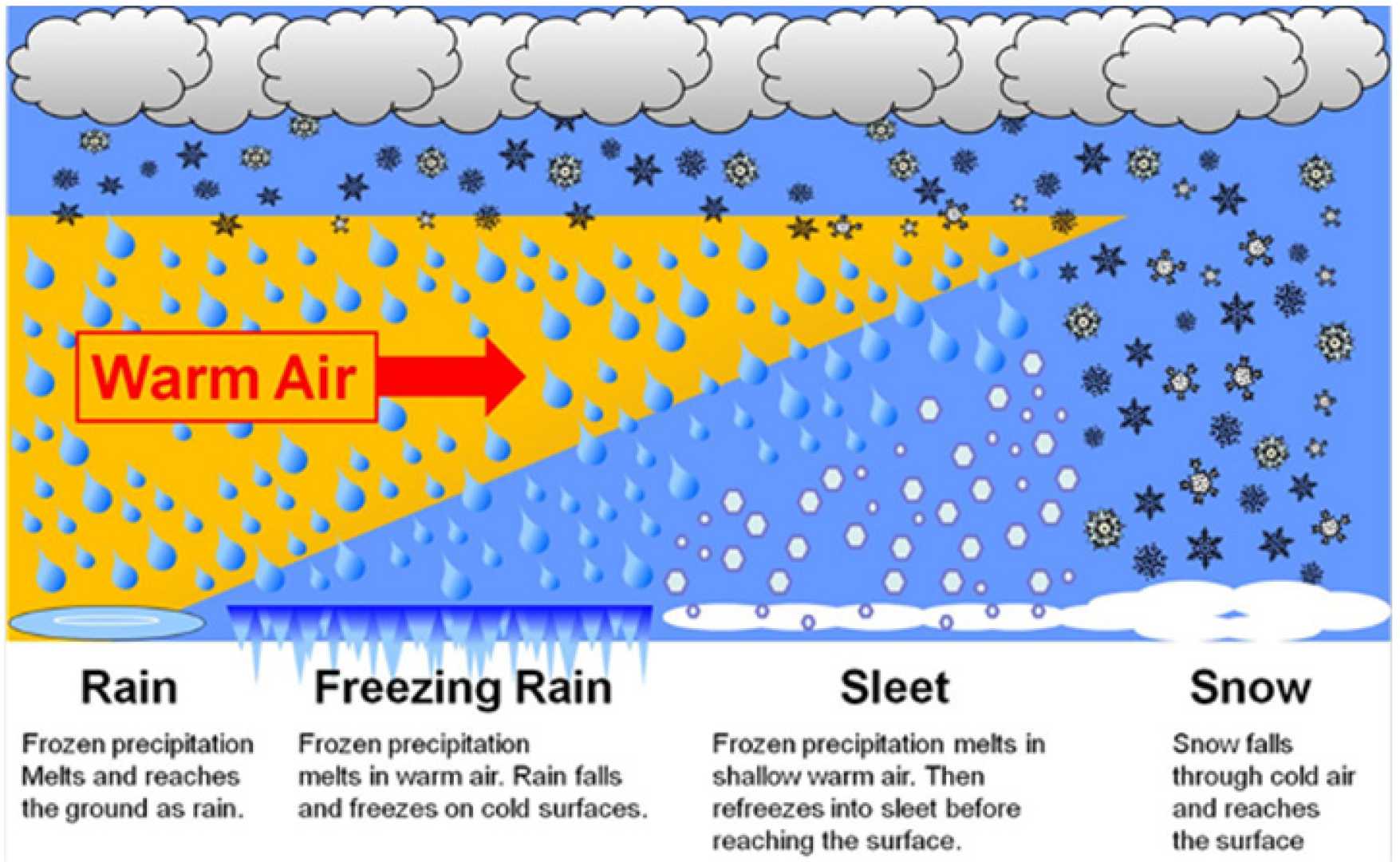News
Winter Weather Explained: The Science Behind Freezing Rain and Sleet

SOUTH BEND, Ind. (WNDU) – As winter storms sweep across the region, terms like “freezing rain” and “sleet” dominate weather forecasts. But what exactly sets these icy phenomena apart? WNDU First Alert Meteorologist Alyssa Heilmann explains the science behind these winter weather events.
Winter storms can produce a variety of precipitation types, including snow, sleet, freezing rain, and hail. The key difference lies in the atmospheric conditions as precipitation falls from the clouds to the ground. Snow forms when the air is cold from the clouds to the surface, while rain occurs when the air is warm throughout. However, freezing rain and sleet are more complex, forming due to a “warm-air sandwich” in the atmosphere.
According to meteorologists, precipitation begins as snow in the cold upper layer of the atmosphere. As it falls through a warmer layer, it melts into rain. If the warm layer is thin, the rain refreezes into ice pellets before reaching the ground, creating sleet. If the warm layer is thicker, the rain remains liquid until it hits the cold surface, where it freezes on contact, forming freezing rain.
“Freezing rain is by far the most dangerous because it forms a solid sheet of ice, as opposed to sleet that just has small ice pellets that quickly bounce off of the surface,” said AccuWeather meteorologist Brett Anderson. “Sleet can even provide a little bit of traction for drivers, as opposed to the obvious dangers of a solid sheet of ice that forms from freezing rain.”
While sleet and hail are both frozen precipitation, they form under different conditions. Sleet is a winter phenomenon, while hail typically forms in thunderstorms during warmer months. Hailstones grow as ice crystals and cloud droplets freeze onto them in the upper reaches of thunderstorms, where temperatures are below freezing even in summer. The heaviest hailstone ever recorded weighed 2.25 pounds and fell in Gopalganj district, Bangladesh, in 1986.
As winter continues, residents are urged to stay informed about weather conditions and take precautions. Warming centers are available across the region for those in need of shelter from the cold. Meteorologists also warn against venturing onto shelf ice, which can be deceptively dangerous despite its picturesque appearance.












